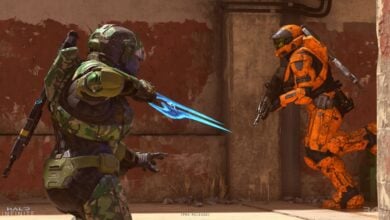Master Chief is back in action, baby! It’s the first new game that has officially been released on PC since Halo: Combat Evolved. We’re excited to bring you fresh new content for Halo starting with the Best Halo Infinite settings guide, which will improve graphics and boost FPS on PC.
I’ve tested the settings for Halo Infinite on the following PC:
- CPU: Intel i7-11800H
- GPU: Nvidia RTX 3060
- RAM: 16 GB
- Storage: 1TB NVMe SSD
- OS: Windows 11 Pro
You’ll need at least an AMD Ryzen 5 1600 or Intel i5-4440 for the CPU, AMD RX 570 or Nvidia GTX 1050 Ti for the GPU, and 16 GB of RAM to run Halo Infinite.
According to my testing, the following settings were observed to impact FPS the most:
- Anti-Aliasing
- Ambient Occlusion
- Geometry Quality
- Reflection
- Shadow Quality
- Lighting Quality
Halo Infinite can be a very taxing game to run for your system, especially since graphics were improved significantly from its predecessors (as seen in Huzaifa’s review of Halo Infinite). Halo Infinite lacks an AI upscaler like FSR or DLSS and instead opts for a TAA upscaler. I’ve encountered FPS drops in some places during my testing. Stuttering was also something that showed in some places filled with grunts.
Best Halo Infinite Graphics Settings
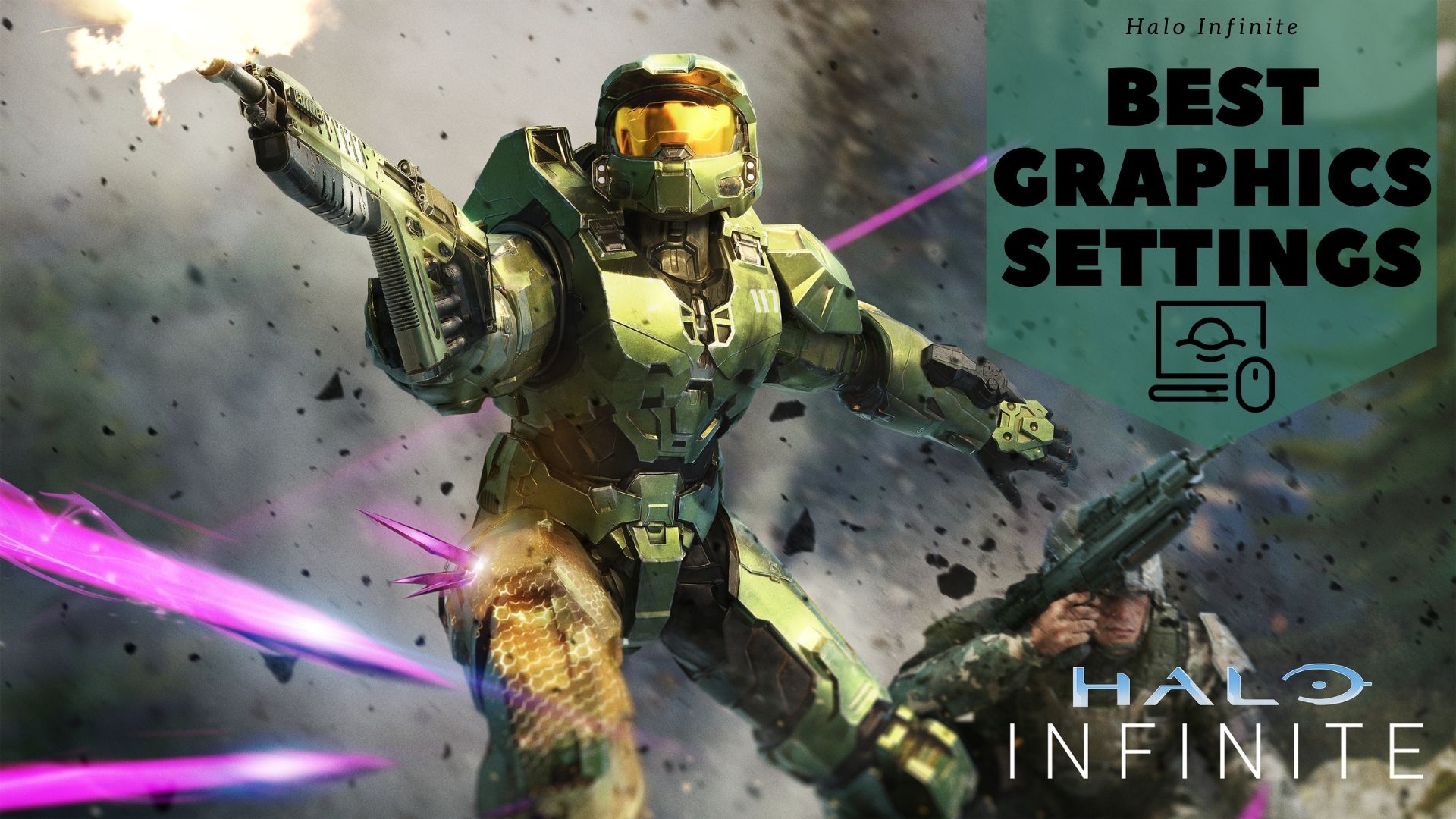
Summary Of Graphics Settings
| Setting Name | What to set it to |
|---|---|
| Field of View | 100+ |
| Borderless Fullscreen | Enabled |
| Resolution Scale | 100% |
| Minimum Framerate | Off |
| Maximum Framerate | Unlocked |
| VSYNC | Off |
| Limit Inactive Frame Rate | Personal Preference |
| Quality Preset | Custom |
| Anti-Aliasing | Low |
| Texture Filtering | Low |
| Ambient Occlusion | Low |
| Texture Quality | Low or Medium |
| Geometry Quality | Low or Medium |
| Reflection | Off or Low |
| Depth of Field | High |
| Shadow Quality | Low |
| Lighting Quality | Low |
| Volumetric Fog Quality | High |
| Cloud Quality | Low |
| Dynamic Wind | Low |
| Ground Cover Quality | High or Ultra |
| Effects Quality | Low |
| Decal Quality | Ultra |
| Animation Quality | Auto |
| Terrain Quality | High or Ultra |
| Simulation Quality | High |
| Flocking Quality | Off or Low |
| ASYNC Compute | Enabled |
| Blur | 0% |
| Screen Shake | 0% |
| Exposure | 0% |
| Full-Screen Effects | 20% or Lower |
| Speed Lines | Disabled |
| Sharpening | Personal Preference |
| Image Sharpening | Off |
| Anisotropic Filtering | Off |
| FXAA - Antialiasing | Off |
| Gamma Correction | Off |
| Mode - Antialiasing | Off |
| Background Max Frame Rate | 20 |
| Low Latency Mode | Ultra |
| Max Frame Rate | Off |
| Power Management Mode | Prefer Max Performance |
| Monitor Technology | Depends on Monitor |
| Multi-Frame Sampled AA | Off |
| Anisotropic Sample Optimization | On |
| Negative LOD Bias | Allow |
| Quality - Texture Filtering | High Performance |
| Trilinear Optimization | On |
| Threaded Optimization | Auto |
| Radeon Anti-Lag | Enabled |
| Radeon Chill | Disabled |
| Radeon Boost | Disabled |
| Radeon Image Sharpening | Enabled |
| Sharpness | Personal Preference |
| Enable Hardware-Accelerated GPU Scheduling | On |
Halo Infinite is jam-packed with graphical options to customize. You can customize 20 graphics options to fine-tune the performance to your liking.
With my testing, older hardware like a GTX 1650 Super struggles with its limited 4GB VRAM. Alternatively, anything above RTX 3060 will run the game just fine over 60 FPS.
However, our target isn’t just 60 FPS, we’re aiming to push the performance beyond that, especially for competitive modes.
Let’s begin with these best settings guide by tweaking the in-game graphics settings.
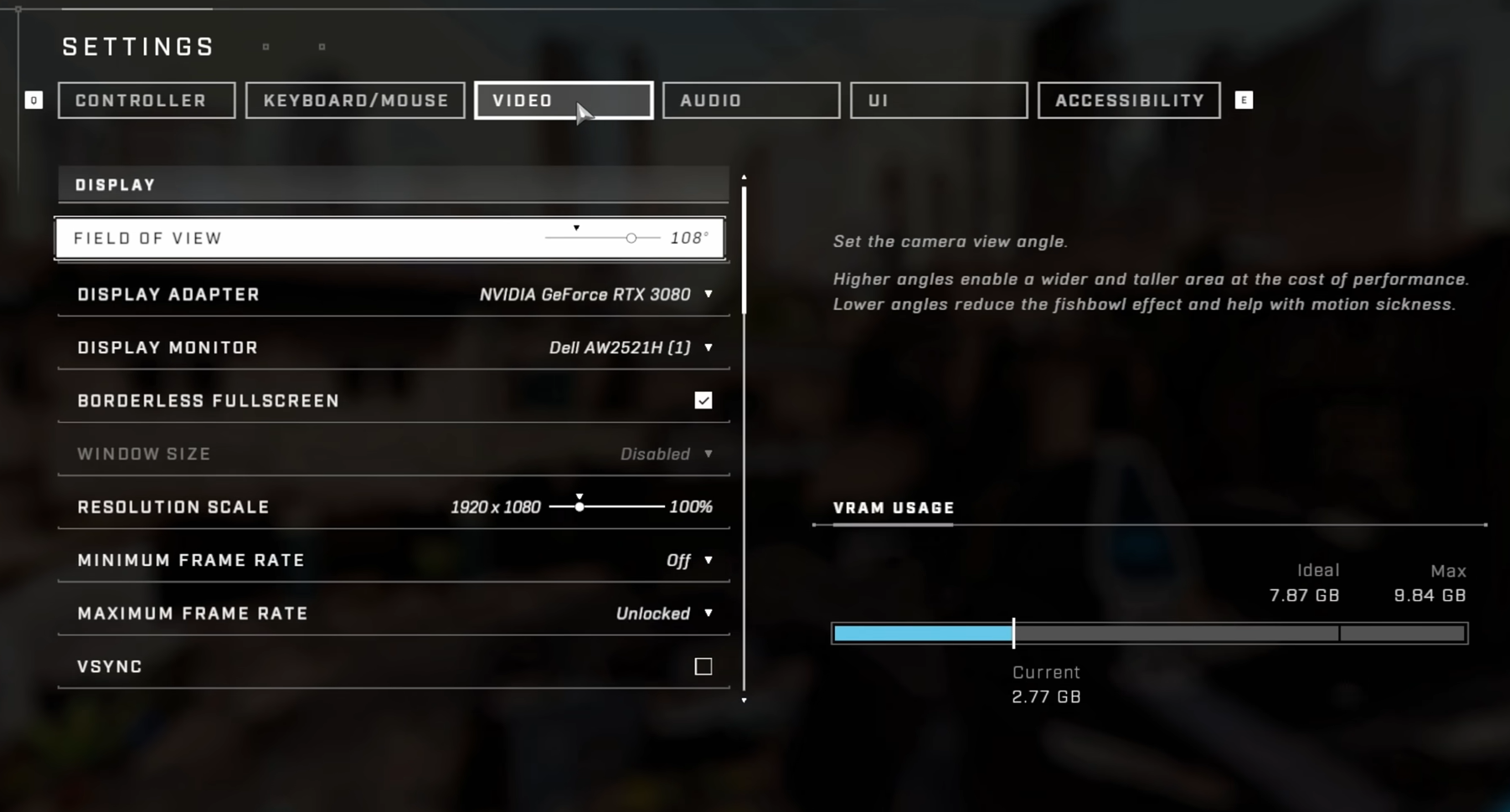
Field of View: 100+
The more you see, the better. Increasing the field of view widens your view to fit more of the scene into your screen. We recommend you turn the field of view to 100 or higher to experience its great effects. Plus, It’s also useful in multiplayer.
Display Adapter: Your GPU
Select your dedicated GPU in the Display Adapter setting to get the maximum performance. In case you have multiple GPUs, select the one you want to run the game on.
Display Monitor: Your Primary Display
In the Display Monitor setting, select the primary monitor that you want Halo Infinite to display on. It is meant for people with multiple displays.
Borderless Fullscreen: Enabled
Halo Infinite doesn’t have a proper exclusive full-screen. If they add a patch into the game later then you should use that instead. However, until then, to get the full-screen image, you have to enable the borderless fullscreen option.
Resolution Scale: 100%
Turn the Resolution Scale to 100% to run Halo Infinite at your native resolution. Lowering Resolution Scale will give you a drastic boost in FPS, but reduce visual clarity as well. Only use this in case you don’t have any other option to achieve better performance.
Minimum Framerate: Off
Turn Minimum Framerate to Off to disable the dynamic resolution feature of Halo Infinite. If you set a particular FPS target in the Minimum Framerate setting, the game will actively lower your graphics and resolution to achieve that target. The higher the target, the muddier your textures will get.
Maximum Framerate: Unlocked
Turn the Maximum Framerate to Unlocked to avoid capping your FPS. However, if you want the game to run on a fixed framerate, you can set it here.
VSYNC: Off
Turn Vsync off to avoid FPS capping. However, if you face consistent screen tearing in the game, turn it back on.
Limit Inactive Frame Rate: Personal Preference
Limit Inactive Frame Rate option has helped some players get slightly better performance in Halo Infinite but also caused problems for others. Disable the Limit Inactive Frame Rate option in Halo Infinite in case you start experiencing in-game stutters or lag.
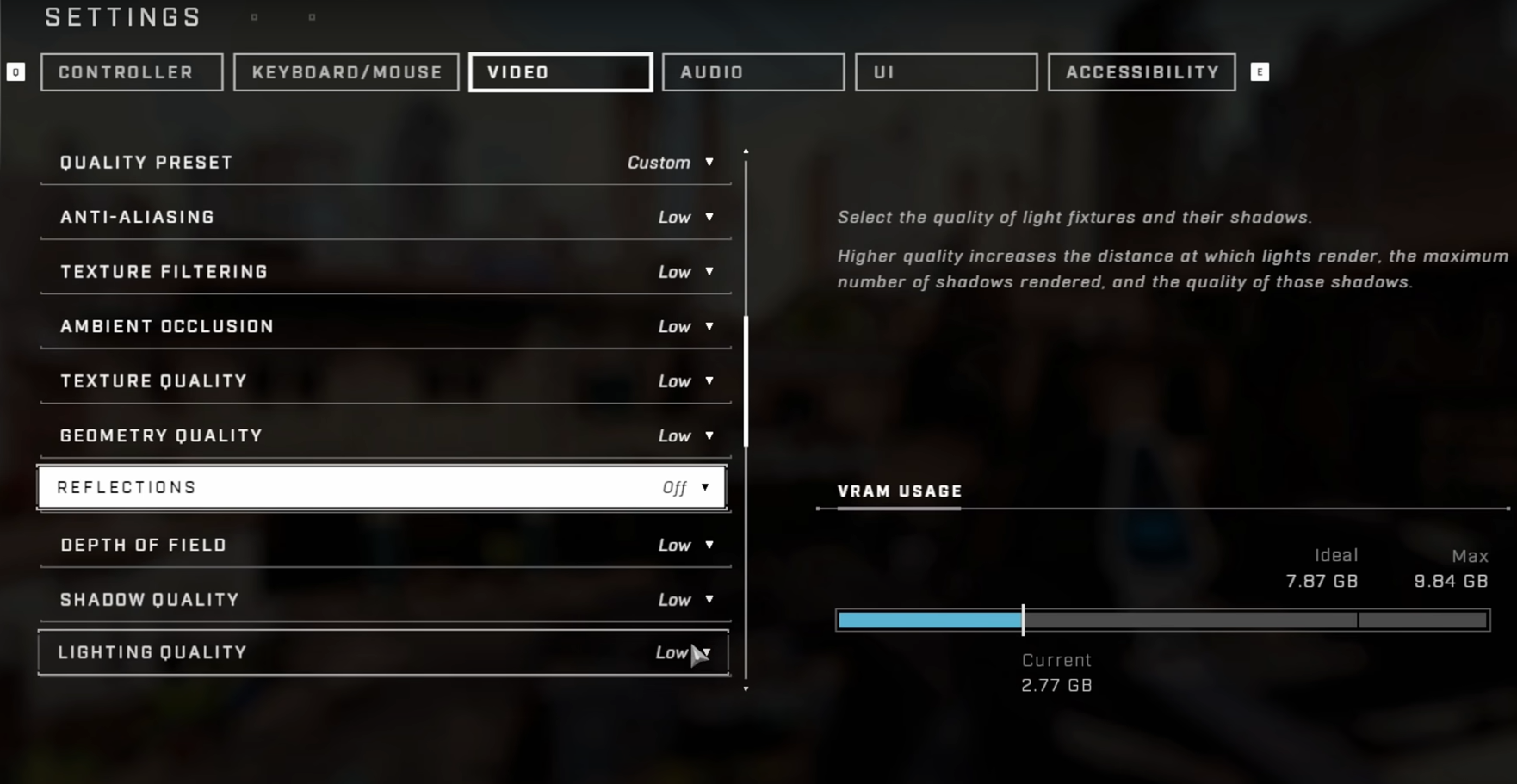
Quality Preset: Custom
To configure each graphics setting individually, set the Quality Preset to Custom.
Anti-Aliasing: Low
Anti-aliasing takes a heavy hit at performance. Turn it to Low to get the most performance in Halo Infinite. However, if jagged edges on textures bother you a lot, turn Anti-Aliasing up a bit.
Texture Filtering: Low
Texture Anisotropic Filtering smoothes the textures in Halo Infinite. Set it to Low to avoid taking a hit on FPS.
Ambient Occlusion: Low
If you’re after maximum performance, then set the Screen Space Ambient Occlusion to Low.
Texture Quality: Low or Medium
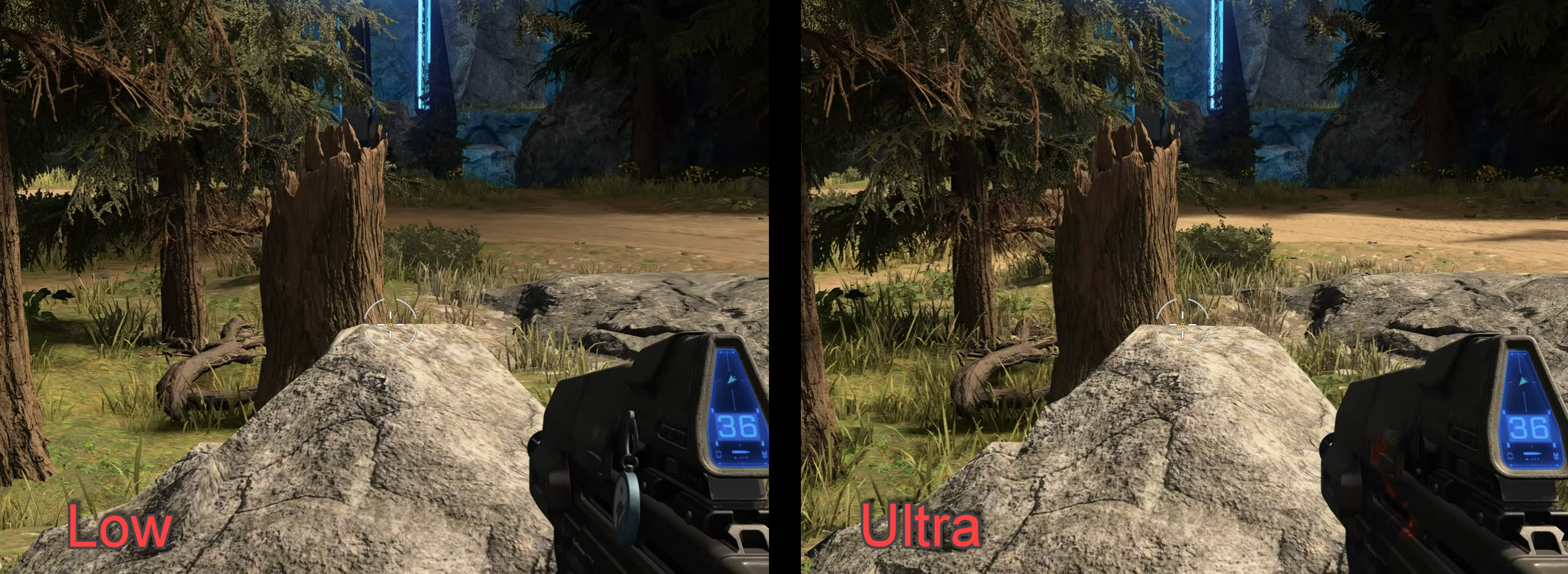
This Halo Infinite setting depends on whether you want to play Halo Infinite’s campaign or multiplayer. If you’re playing the campaign, turn Texture Quality to Medium for decent visuals. If you’re going to play multiplayer, turn Texture Quality to Low to get the best FPS.
Geometry Quality: Low or Medium
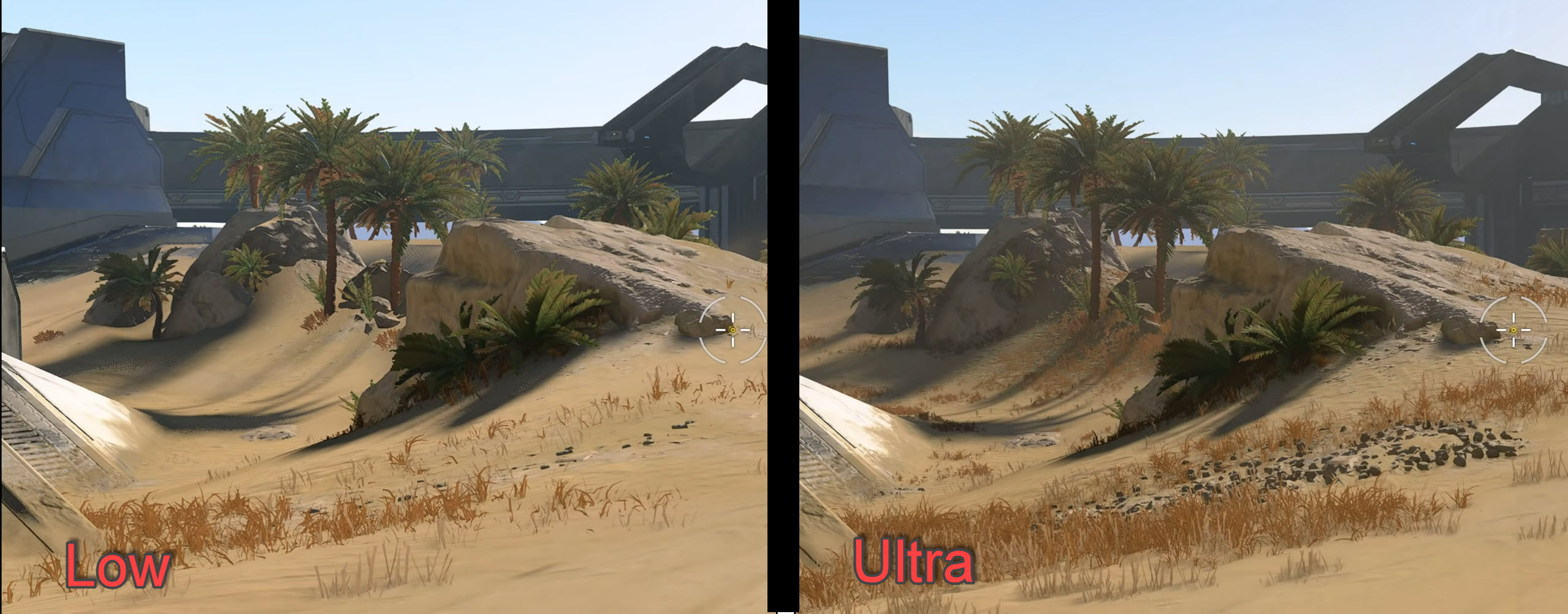
Geometry Quality is a taxing feature that can dip your FPS a lot. Set it to low for best performance in Halo Infinite. In case you have a mid-range to high-end PC, then set Geometry Quality to high for better visual quality at distances and fewer pop-ins.
Reflection: Off or Low
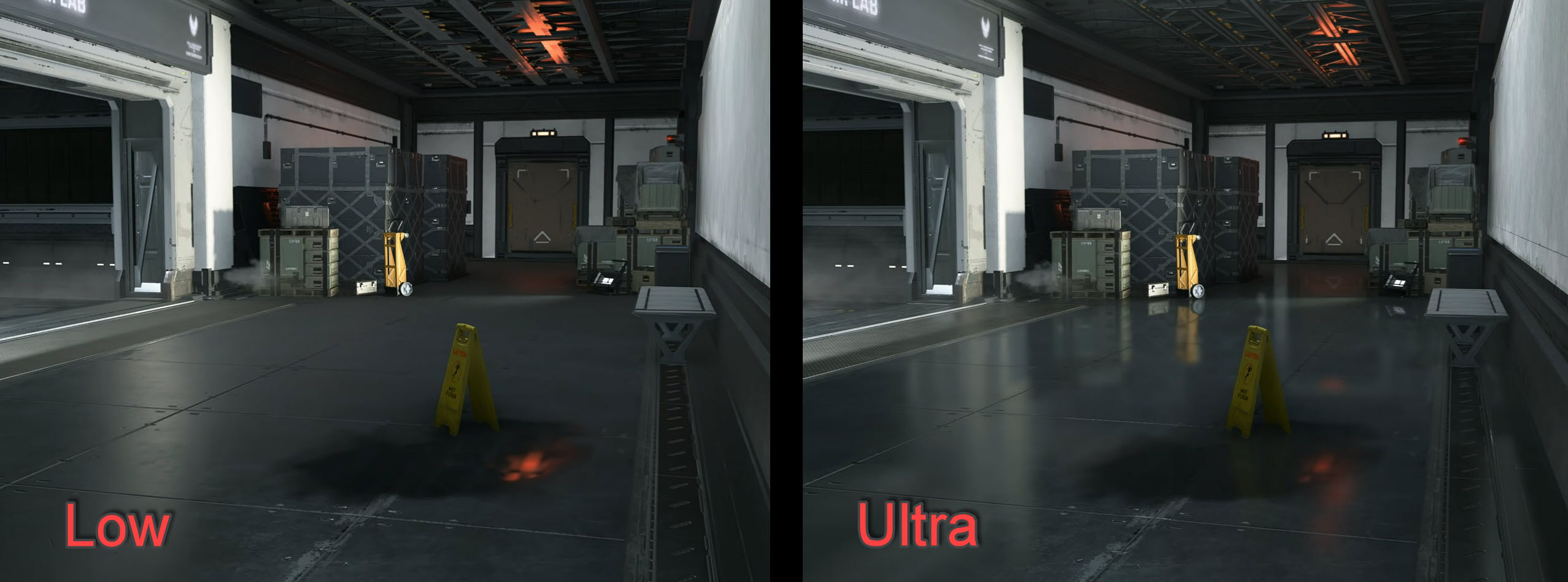
Halo Infinite has some of the best reflections for water and metallic surfaces. If you have some FPS to spare, I’d recommend turning Reflections to Low to have at least some effect. If you’re struggling with performance, then turn it off.
Depth of Field: High
Depth of Field doesn’t have any impact on performance so might as well put it high to add a nice Bokeh effect in-game. However, turn it off when playing multiplayer to avoid blurring your vision in certain situations.
Shadow Quality: Low
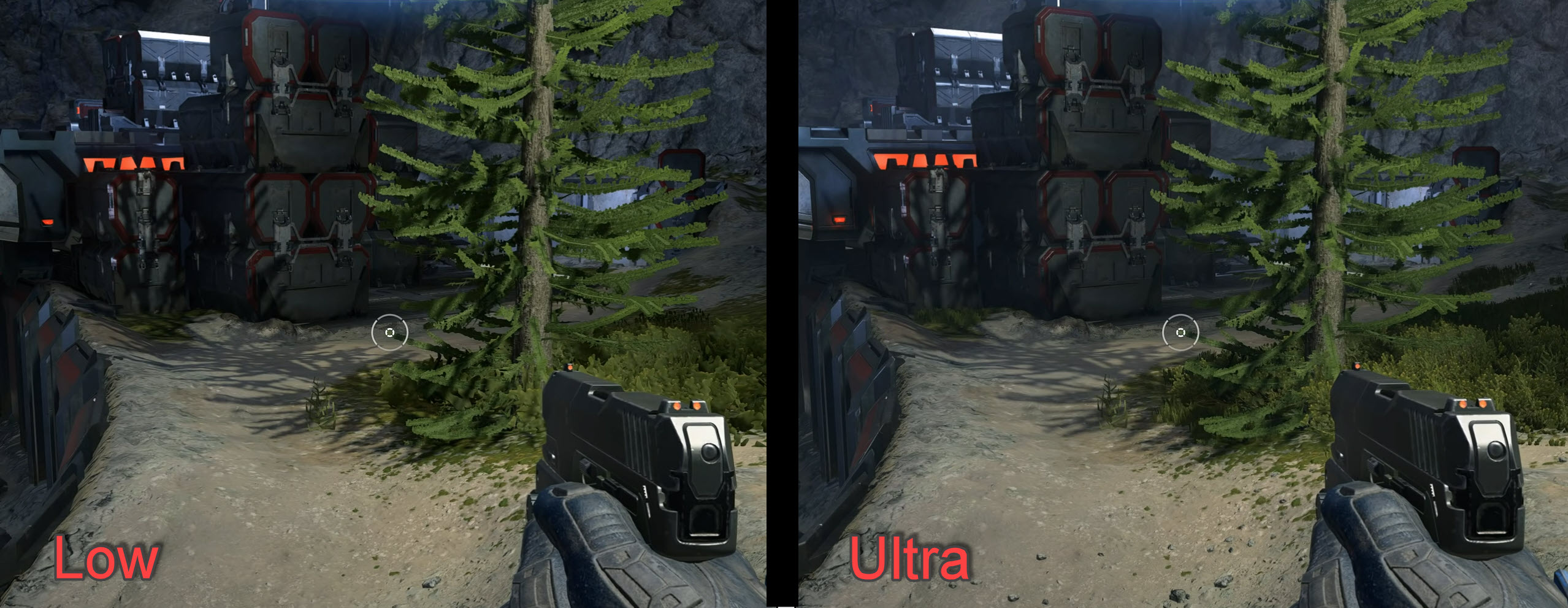
Shadow Quality adjusts the shadow resolution to make it softer or jagged. Turn it to Low to get better performance since shadows tax FPS significantly.
Lighting Quality: Low

Set Lighting Quality to Low. This will reduce the Light Quality rendered as well as the shadows they create, but this means less process hence a boost in FPS.
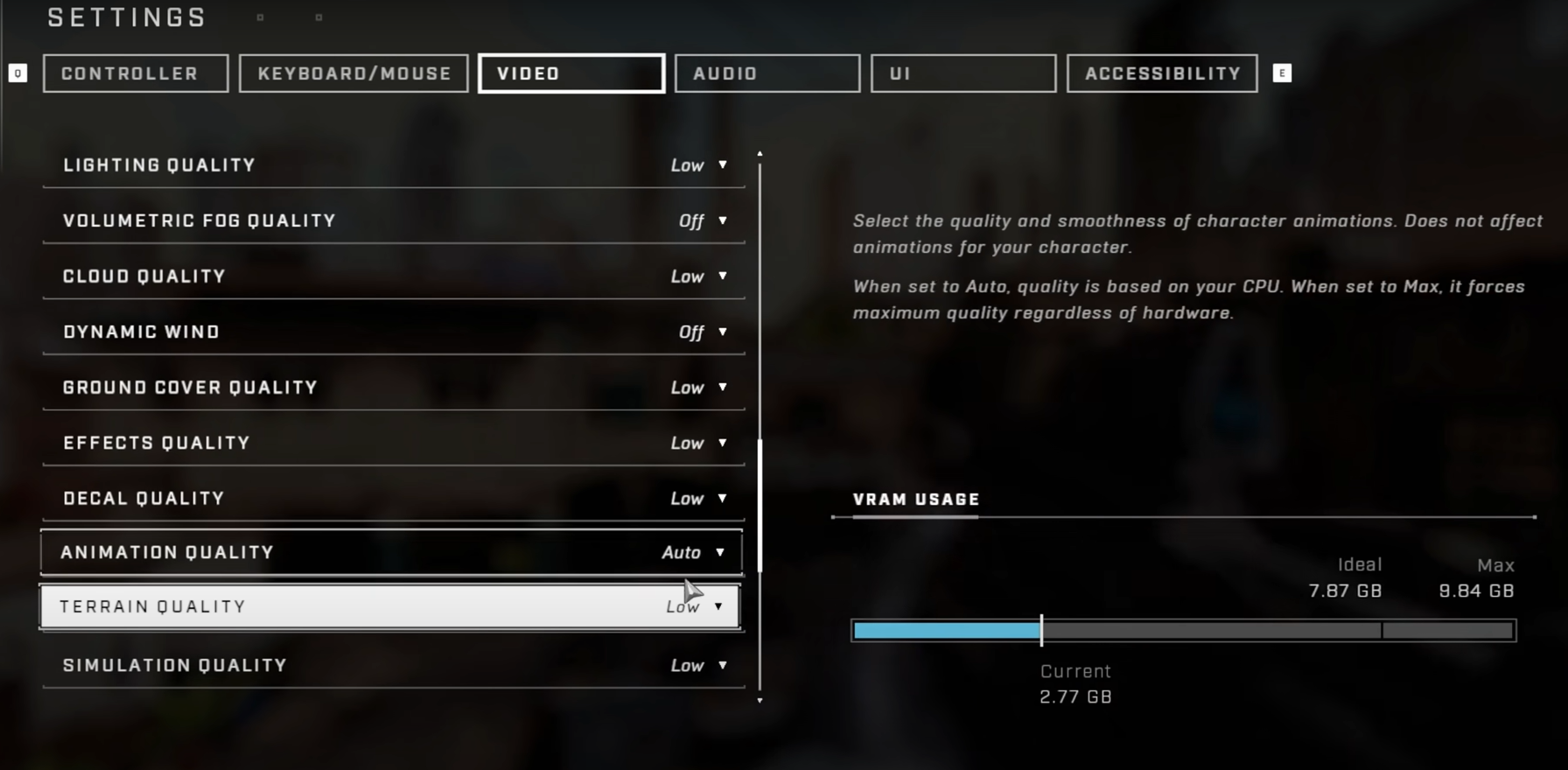
Volumetric Fog Quality: High
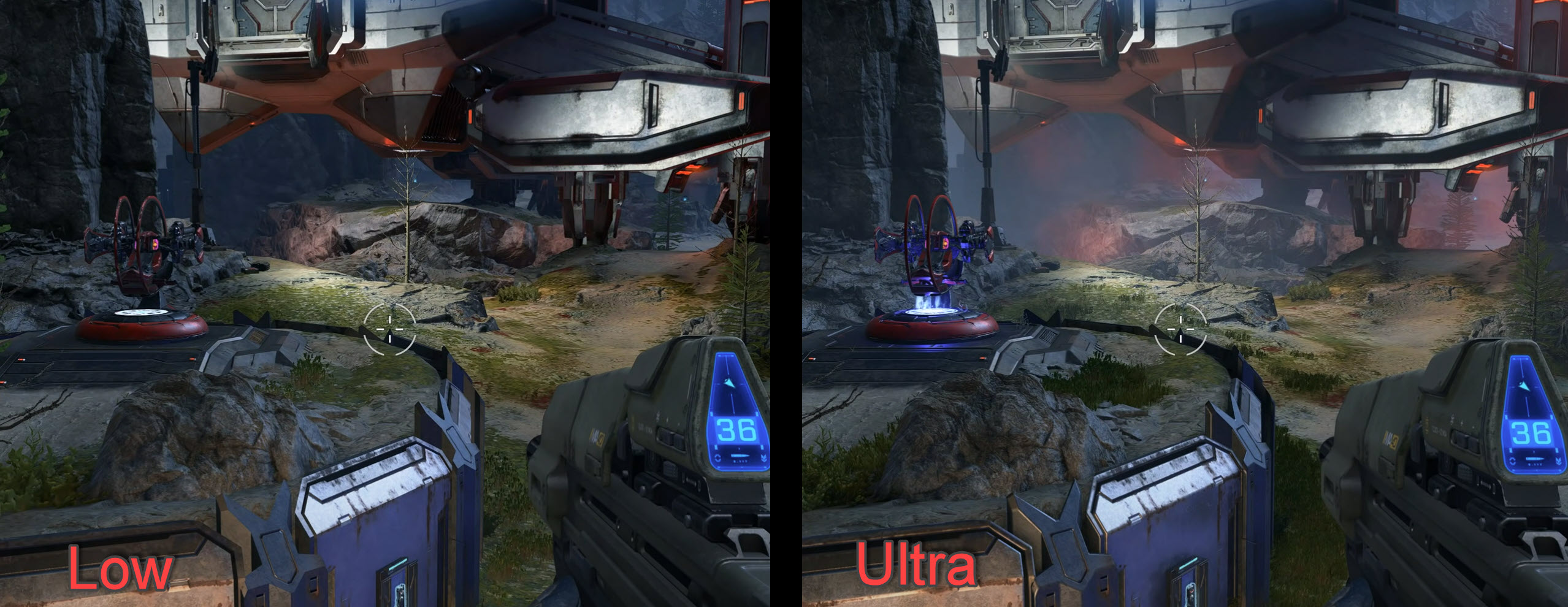
Disabling Volumetric Fog adds a minor 1% improvement to the overall FPS of Halo Infinite. It’s a really minor improvement so might as well turn this Halo Infinite setting to High.
Cloud Quality: Low
Set the Cloud Quality setting to Low to get up to 5% FPS boost in Halo Infinite. Even at low, there’s no noticeable drop in quality.
Dynamic Wind: Low
This is one of the most unique settings in Halo Infinite that I’ve never seen in any other games. Lowering Dynamic Winds from Ultra to Low will give you a decent FPS boost.
Ground Cover Quality: High or Ultra
Ground Cover Quality determines the distance at which the details of the ground like pebbles and grass will be rendered. It makes a huge difference in visual clarity and doesn’t even affect performance that much. So set the Ground Cover Quality to High or Ultra for the best visual clarity.
Effects Quality: Low
Halo Infinite has a slew of fancy graphical effects like explosions and lighting. Turning these Effects Quality to Low will give you a decent boost in FPS.
Decal Quality: Ultra
Decal Quality adds rich details to the environment around you like footprints in mud or bullet holes after shooting. Set it to Ultra since lowering it doesn’t provide better performance.
Animation Quality: Auto
Set the Animation QUality to Auto to allow the game to render the animations according to your CPU’s power. Setting Animations to Max can lead to unwanted stutters or FPS drops.
Terrain Quality: High or Ultra
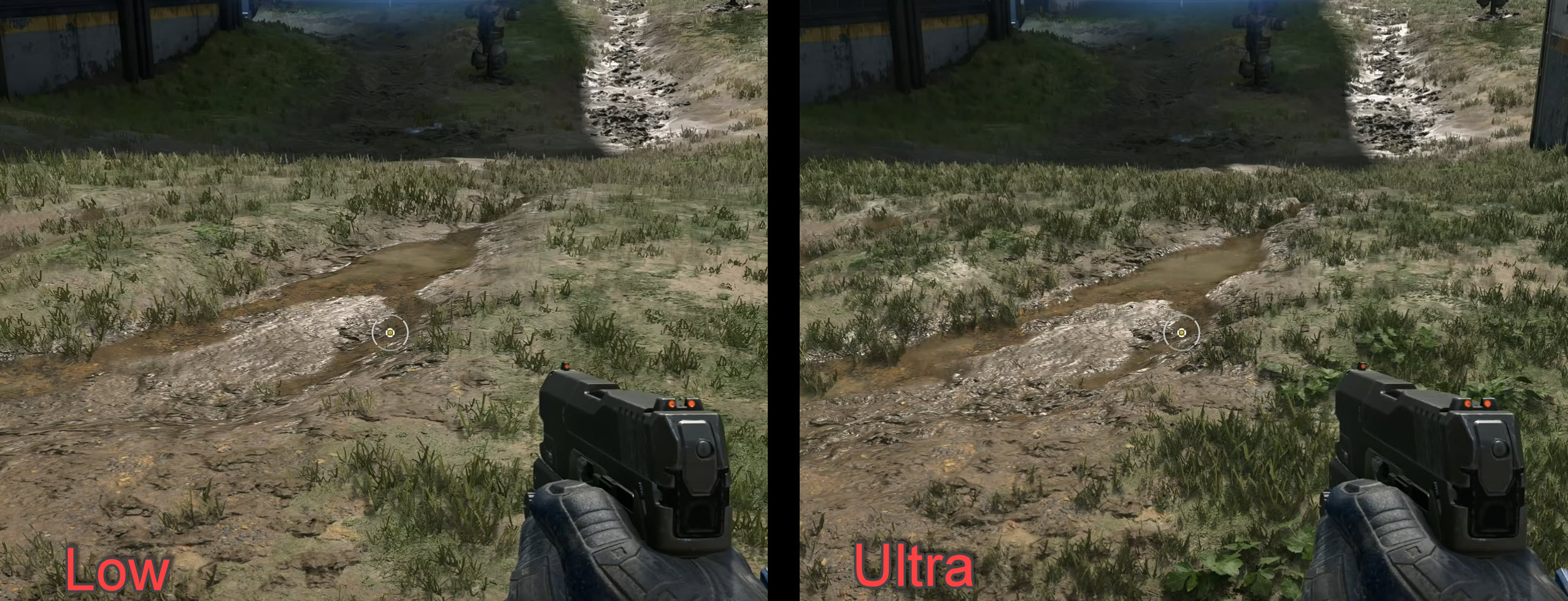
Terrain Quality also has a lighter effect on Halo Infinite’s performance. Set it to High or Ultra for the best visual clarity at a minimal performance cost.
Simulation Quality: High
Simulation Quality is responsible for maintaining the look and feel of in-game mechanics and physics. Although it might sound like a taxing setting, it isn’t. Set Simulation Quality to high for an uncompromised experience in Halo Infinite with no visible FPS reduction.
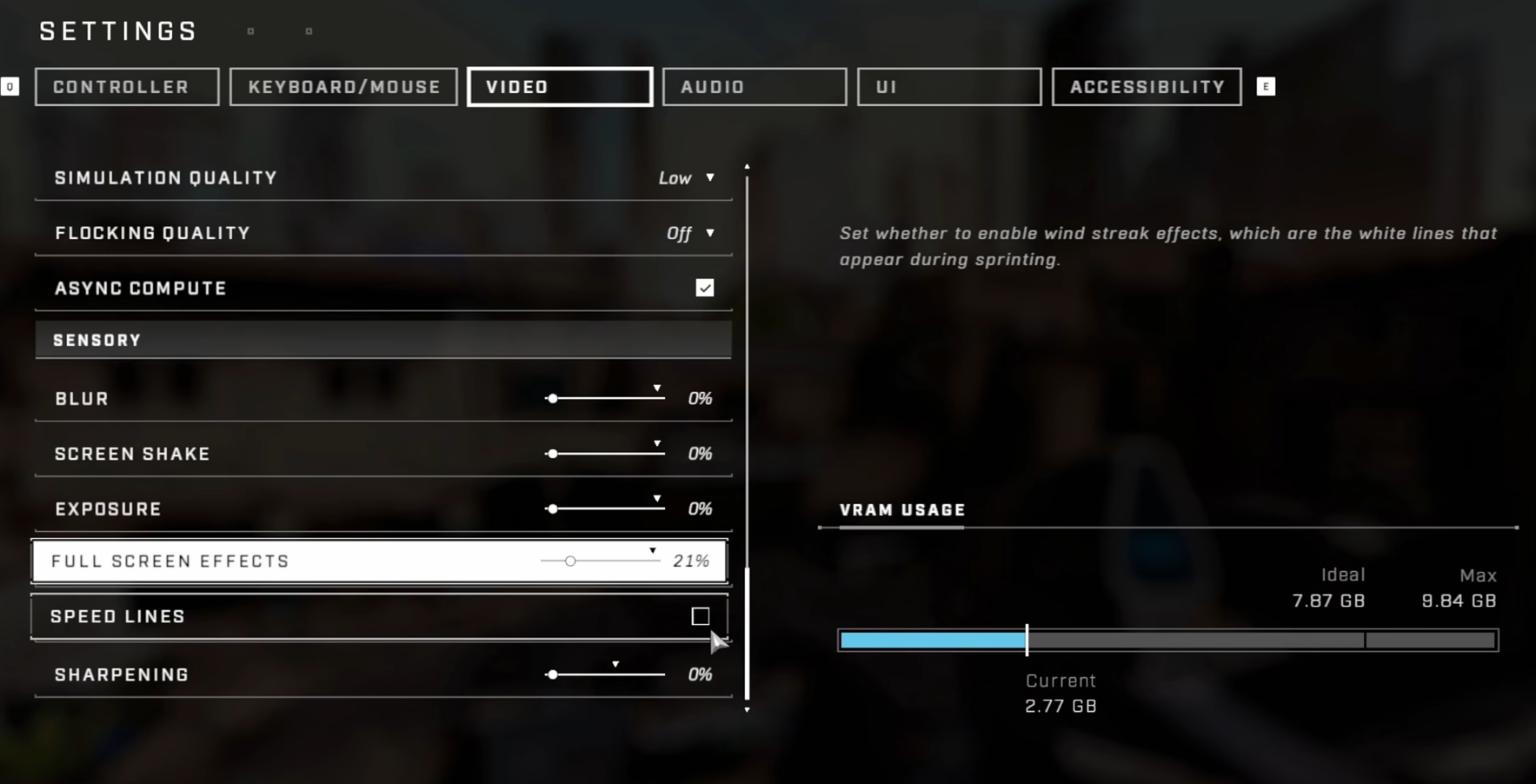
Flocking Quality: Off or Low
The world of Halo Infinite is filled with creatures and birds in the sky making it immersive. I’d recommend turning this Halo Infinite setting Off in multiplayer and low in the campaign for best performance.
ASYNC Compute: Enabled
ASYNC Compute is a great setting that helps you get more FPS by allowing your GPU to crunch graphics and compute workloads at the same time. It benefits both AMD and Nvidia GPUs so feel free to enable it. However, there have been reports of crashes by enabling it. So, if you experience random crashes, it’s best to disable this feature until future updates.
Blur: 0%
Avoid using the Radial Blur option, even in campaigns. This causes a weird blur effect during explosions, sprinting, and equipment use that spills the experience of the game.
Screen Shake: 0%
I personally disabled this Halo Infinite setting as setting it to 70% or higher can cause motion sickness to some individuals. Setting it to 0% is the best move here to avoid any distractions in-game.
Exposure: 0%
Turn Exposure all the way to 0% to avoid blinding your eyes with flashes during explosions, the equipment uses, and cutscenes.
Related: Best Call of Duty Vanguard Settings
Full-Screen Effects: 20% or Lower
Full-screen effects add a transparency effect that covers your entire screen while using equipment or recharging your shield. It’s a cool effect that you can set to 20% or lower depending on your taste.
Speed Lines: Disabled
Speed Lines while running seem cool as they give you an idea of your character’s speed in-game. But, they’re merely distractions and can be disabled.
Sharpening: Personal Preference
Sharpening is a personal preference depending on your graphics quality options. If most of your graphics settings are low, use increased sharpness to make textures sharper. Vice versa if you’re using high graphics settings.
Nvidia Settings for Halo Infinite

We’ll tweak the Nvidia Control Panel in this section of the best Halo Infinite settings guide. Even though we’ve optimized the in-game settings, tweaking Nvidia control panel settings is also important for best performance.
Summary Of Best Nvidia Settings For Halo Infinite
| Image Sharpening | Off |
|---|---|
| Anisotropic Filtering | Off |
| FXAA – Antialiasing | Off |
| Gamma Correction -Antialiasing | Off |
| Mode – Antialiasing | Off |
| Background Max Frame Rate | 20 |
| Low Latency Mode | Ultra |
| Power Management Mode | Prefer Max Performance |
| Monitor Technology | Depends on Monitor |
| Multi-Frame Sampled AA (MFAA) | Off |
| Anisotropic Sample Optimization -Texture Filtering | On |
| Negative LOD Bias – Texture Filtering | Allow |
| Quality – Texture Filtering | High Performance |
| Trilinear Optimization – Texture Filtering | On |
| Threaded Optimization | Auto |
AMD Settings for Halo Infinite
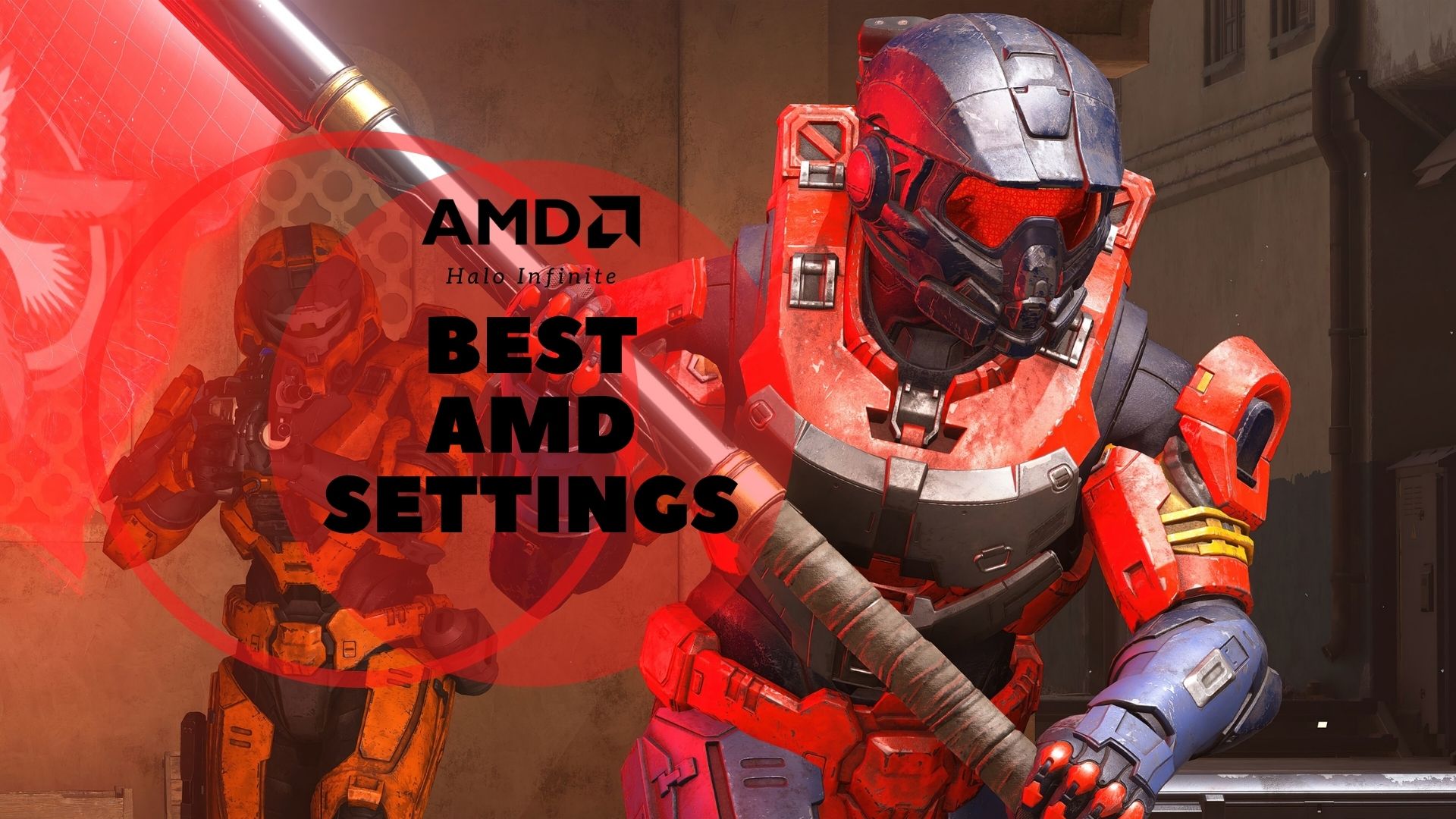
AMD also offers a great level of customizability with its first-party settings. We’ll cover the best AMD settings for Halo Infinite that will boost FPS and add visual clarity to the game.
Quick Table For Best AMD Settings For Halo Infinite
| Radeon Anti-Lag | Enabled |
|---|---|
| Radeon Chill | Disabled |
| Radeon Boost | Disabled |
| Radeon Image Sharpening | Enabled |
| Sharpness | Personal Preference |
| Wait for Vertical Refresh | Always off |
| Anti-Aliasing | Use Application Settings |
| Anti-Aliasing Method | Multisampling |
| Morphological Anti-Aliasing | Disabled |
| Anisotropic Filtering | Disabled |
| Texture Filtering Quality | Performance |
| Surface Format Optimization | Enabled |
| Tessellation Mode | Override Application Settings |
| Maximum Tessellation Level | Off |
| OpenGL Triple Buffering | Disabled |
| Reset Shader Cache | Perform If Current Driver Installation Is Old |
Halo Infinite High FPS Optimization Tips
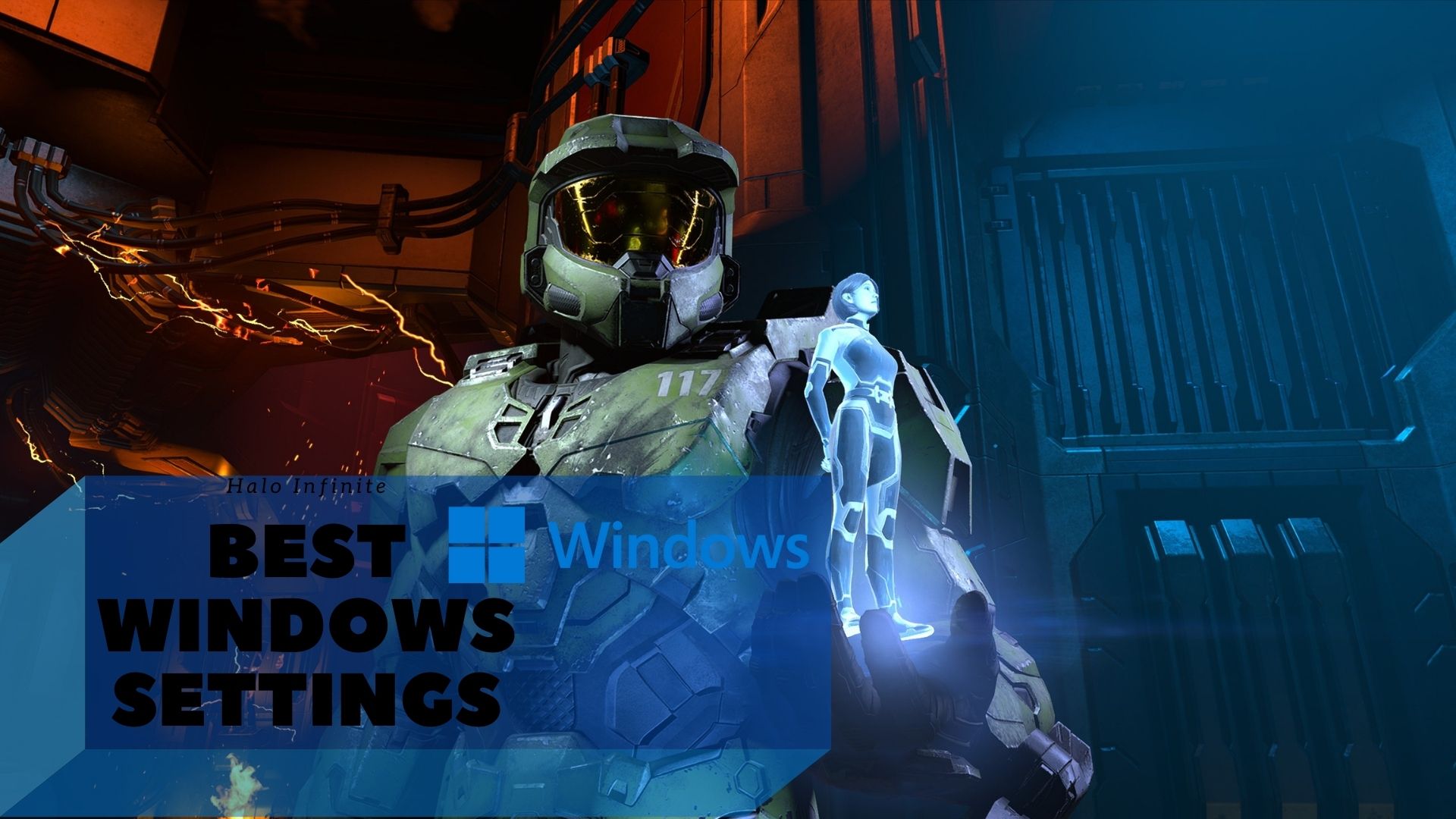
After configuring the in-game graphics settings as well as the respective GPU settings, let’s tweak Windows so it can perform the best too. The Windows optimizations that I’ll be recommending aren’t only great for Halo Infinite, but they’ll also benefit your regular day-to-day usage too.
So let’s move ahead with the tweaks below:
- Update Windows To the Latest Version: Halo Infinite is a Microsoft-exclusive title and the updates can include some essential fixes to aid performance and stability.
- Clear Cache in Halo Infinite: Excessive build-up of cache can cause issues ranging from minor stutters to frequent FPS drops. I recommend clearing Halo Infinite’s cache by deleting a folder named “gamecmscache” located inside “disk_cache” within the game’s install directory.
- Run The Game As Administrator: Running Halo Infinite as an administrator helps reduce several performance issues and crashes as running as admin grants it all the permission it needs.
- Enable Hardware-Accelerated GPU Scheduling: Enabling Hardware-Acceleration can boost gaming and overall PC performance using your GPU. The option is located in Windows Settings > Display Settings > Graphics Settings.
- Use The Ultimate Power Plan: It pushes your CPU and GPU clock speeds to the max providing high FPS in games. The Ultimate power plan is often hidden by default but you can unlock it manually by entering “powercfg -duplicatescheme e9a42b02 -d5df -448d -aa00 -03f14749eb61″ in Windows Powershell. You can later go ahead and enable this power plan.
- Disable Unwanted Background Applications: I recommend terminating unnecessary background processes as they consume a large chunk of your memory leaving bits for your game to use.
- Enable Windows Game Mode: Game Mode boosts performance by prioritizing the game running by minimizing or idling the background processes. You can enable it in Settings > Gaming > Game Mode.
My Take On Halo Infinite Performance
While running the game on my RTX 3060, the performance was all over the place. In the campaign, I was getting a solid 60-70 FPS on these optimized settings which was okay for the time being. Multiplayer performance surprised me a bit with the game reaching 150 FPS and then dropping down to 40s.
Let’s talk facts here. No matter how much we were excited about Halo Infinite finally dropping to PC, they gave us a bad port. The performance is too damn bad with players getting 60-ish FPS on RTX 3090s. Players were so excited about this port that they built PCs just for its release and ended up getting 60 FPS in story mode.
Now besides all the woes players have been sharing online, Halo Support has acknowledged the issue on Twitter and told players to wait patiently as they come up with a fix.
The #HaloInfinite team is investigating the following issues: increases in reports of performance issues and crashes in both gameplay and the Armor Hall menus, colors on Nameplates and Emblems now appearing differently, some menus not loading, and Settings being reset. (1/3)
— Halo Support (@HaloSupport) March 9, 2023
So, my best suggestion is to play with the optimized settings I’ve mentioned above and wait for an official performance pass from the devs. Hopefully, after the patch, the game will run much better, and then you can hopefully crank up a few settings.
Frequently Asked Questions
These Best Halo Infinite settings are meant for PC only since there isn’t much graphics customizability when it comes to consoles.
The multiplayer of Halo Infinite is completely free to play. However, if you want to experience the story (campaign) of Masterchief in this new installment, you’ll have to buy the game.
It highly depends on your system. However, you expect an upwards of 10-60% performance improvement on your PC.
No. Halo Infinite is currently only available to play on Windows PCs and hasn’t been officially released on Linux. All the settings mentioned in this guide are geared towards Windows PCs.
Why stop now? There’s a ton of stuff to read on Exputer! Check out another interesting guide on Best Valorant Settings.
Thanks! Do share your feedback with us. ⚡
How can we make this post better? Your help would be appreciated. ✍
